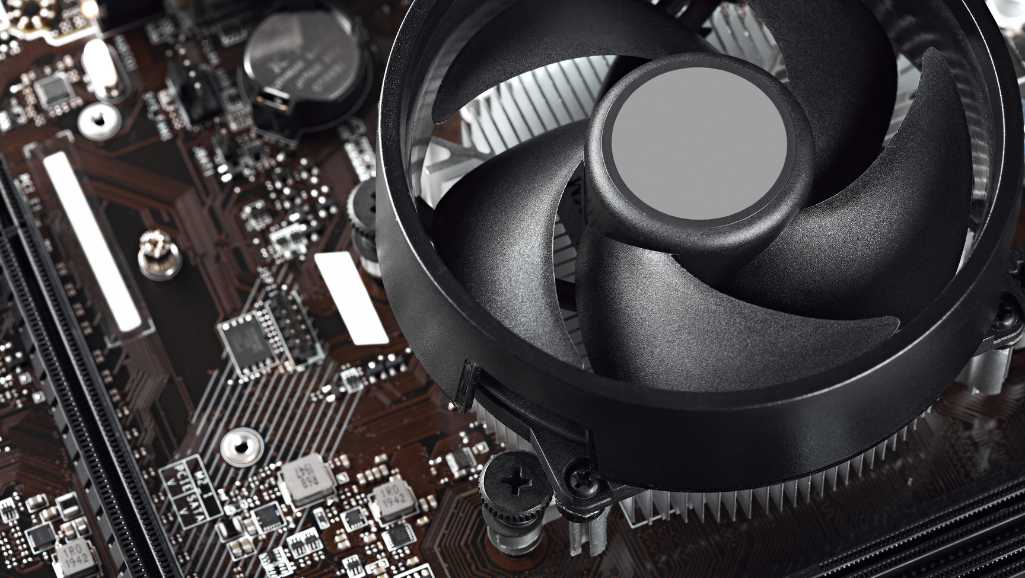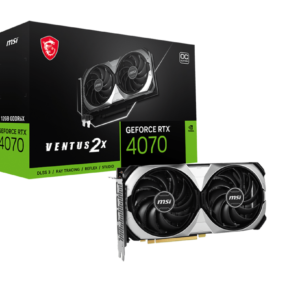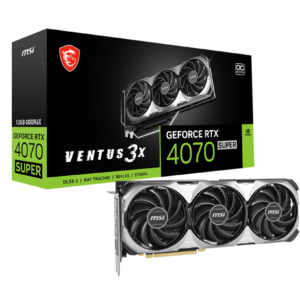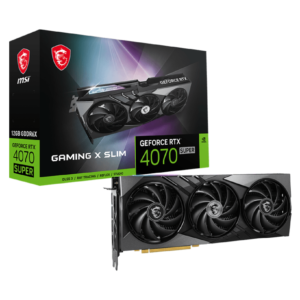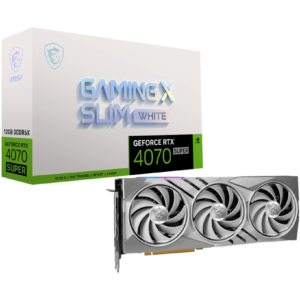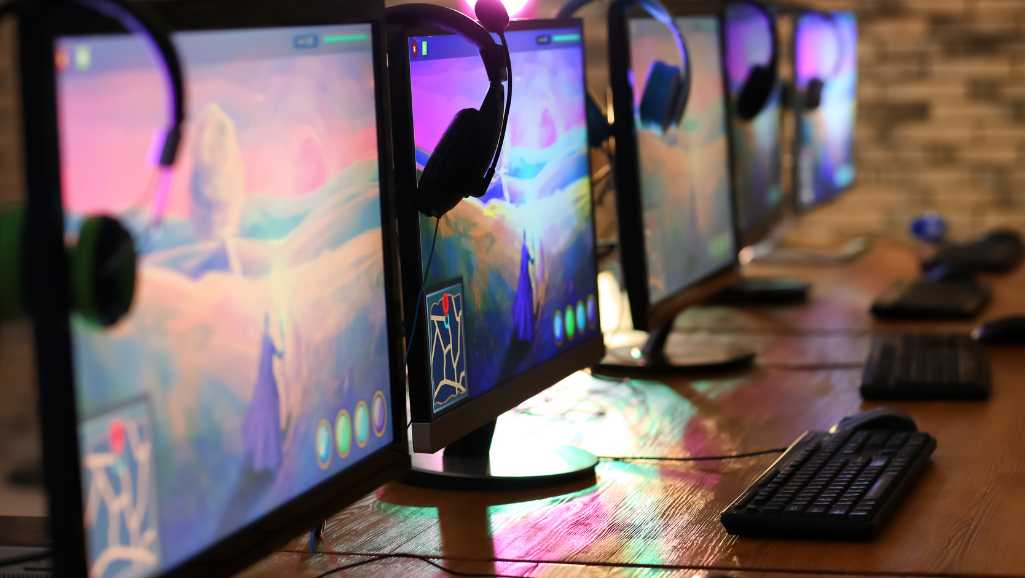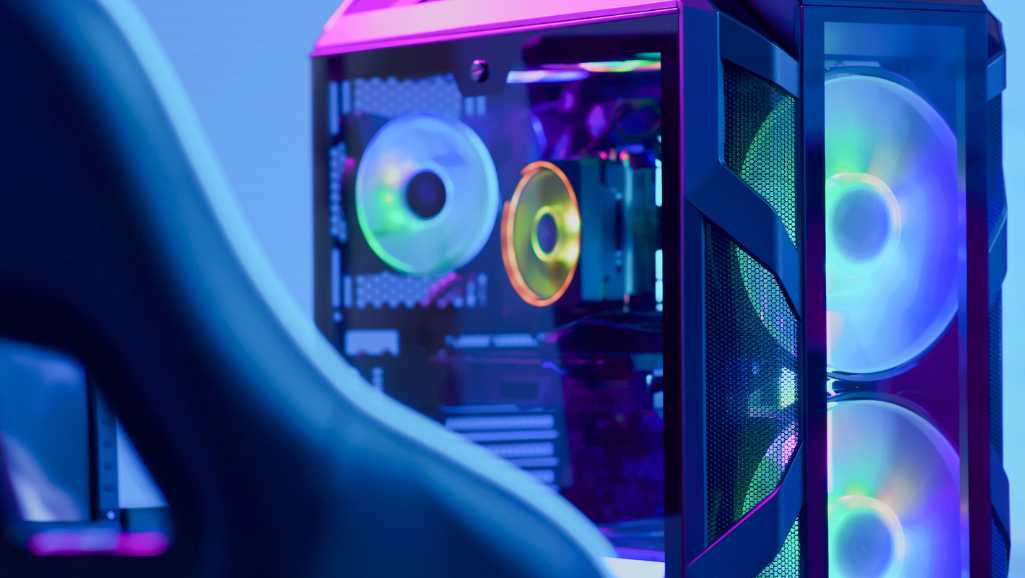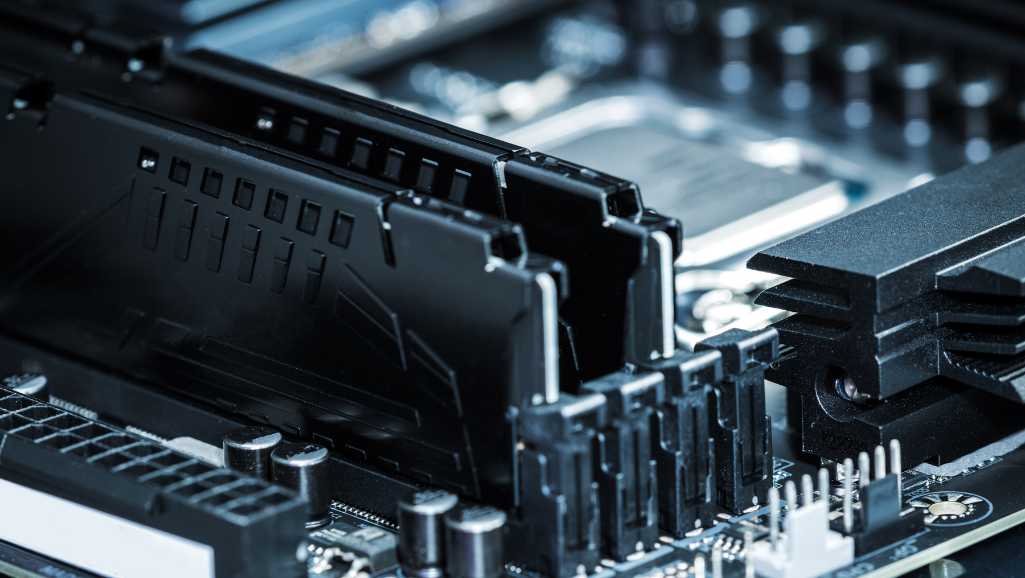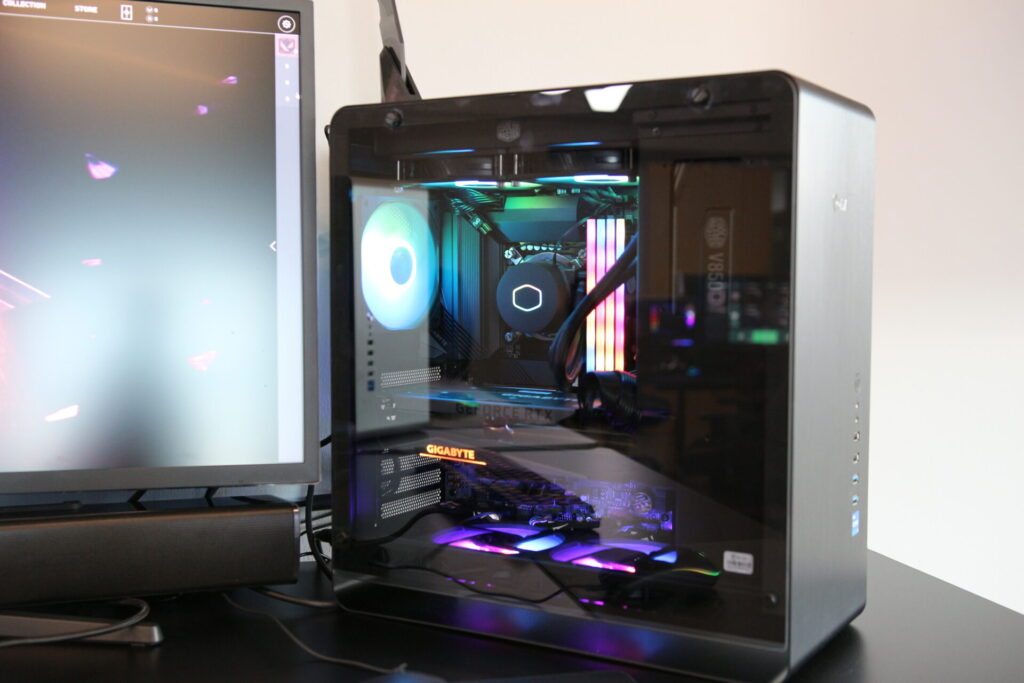The custom gaming industry is on the brink of a monumental shift with Nvidia’s introduction of their next-gen AI GPUs, capable of drawing a staggering 1000W of power. This leap forward promises to revolutionize custom PC builds, elevating gaming rigs to unprecedented levels of performance and realism. These GPUs will not only transform how games are played but also how they are created, with significant implications for content creators and professional applications alike. The potential for AI-driven enhancements in frame rates, image quality, and ray tracing will set a new standard for what’s possible in gaming graphics. As we explore the impact of these powerful GPUs, we consider the technical challenges and the broader implications for the gaming community and beyond.
Key Takeaways
- Nvidia’s next-gen AI GPUs represent a significant power leap, requiring advanced cooling solutions, robust power supplies, and thoughtful system design to manage the 1000W power draw.
- The implementation of Nvidia’s DLSS technology will push frame rates higher without compromising image quality, leveraging AI to enhance the gaming experience.
- Content creators will benefit from the RTX 40 Series GPUs, which will facilitate more efficient workflows, superior 4K video editing, complex 3D rendering, and improved live streaming.
- Ray tracing technology in the GeForce RTX 4000 Series will bring about a new era of realism in gaming, with advanced lighting techniques that significantly impact visual fidelity.
- Nvidia’s diverse GPU portfolio, including the A100 and L40S, caters to a range of professional applications, offering tailored solutions for AI, data analytics, and high-performance computing.
The Power Surge: Managing a 1000W GPU
Cooling Solutions for Extreme Heat Output
The advent of Nvidia’s 1000W GPUs has necessitated a paradigm shift in cooling technology. Advanced Thermal Solutions, Inc. (ATS) has responded with a family of ultra-high performance heat sinks, designed specifically for high powered devices like GPUs and AI processors. These solutions include both active and passive heat sinks, leveraging integral blowers or existing airflow for efficient thermal management.
In addition to heat sinks, the expansion of the SuperCool Series by Laird Thermal Systems introduces ultra-compact Peltier Cooler assemblies. These are particularly suited for scenarios where space is at a premium but high cooling capacities are required.
The integration of high-conductivity heat spreaders, such as HiK aluminum plates with copper-water heat pipes, has been a game-changer, enhancing the performance of cooling systems in both military and commercial applications.
For those pushing the limits with overclocked GPUs, a water cooling system is a must. It’s not just about keeping temperatures low; it’s about ensuring stability and longevity of the entire custom gaming .
Power Supply Requirements and Recommendations
The advent of Nvidia’s 1000W GPUs necessitates a significant upgrade in power supply units (PSUs) for custom PC builds. Choosing the right PSU is critical for system stability and longevity. With the increased power draw, it’s essential to opt for a PSU that not only meets the wattage requirements but also ensures efficient power delivery and reliability.
For a 1000W GPU, a PSU rated at least 80 PLUS Gold is recommended for optimal efficiency. However, considering future-proofing and potential system expansions, a higher certification like 80 PLUS Platinum or Titanium may be more appropriate. Here’s a quick reference table for PSU recommendations:
| PSU Model | Wattage | Efficiency Rating |
|---|---|---|
| Corsair RM750x (2021) | 750W | 80 PLUS Gold |
| Seasonic Prime Titanium TX-1000 | 1000W | 80 PLUS Titanium |
It’s important to note that while a 750W PSU can suffice for less demanding configurations, a 1000W or higher PSU is advisable for systems with Nvidia’s next-gen AI GPUs to ensure ample headroom for peak performance.
Additionally, when selecting a PSU, consider the inclusion of modular cables to reduce clutter and improve airflow within the chassis. The quality of components and the warranty offered by the manufacturer are also key factors that should influence the decision.
Impact on Overall System Design
Integrating Nvidia’s 1000W AI GPUs into custom PC builds necessitates a holistic approach to system design. The entire PC architecture must be optimized to handle the substantial power and thermal demands. This includes rethinking the layout of components to ensure adequate airflow and considering the use of advanced materials for heat dissipation.
- Component Layout: Strategic placement of components to maximize cooling efficiency.
- Thermal Materials: Use of high-conductivity materials for heat sinks and thermal pads.
- Cable Management: Organized cables to prevent airflow blockage.
- Chassis Selection: Choosing a case with optimal space and ventilation.
The synergy between high-powered GPUs and the rest of the system components is critical for stability and performance. A well-designed system not only accommodates the GPU but also enhances its potential through efficient power distribution and cooling.
The impact on system design extends beyond the physical aspects. Software tools, such as Flex Power Designer, are essential for optimizing power-stage design and accelerating time to market. These tools assist in creating a load-based design that is both efficient and effective for the high demands of next-gen GPUs.
AI-Driven Performance: Nvidia’s DLSS Technology
Understanding Deep Learning Super Sampling
Nvidia’s Deep Learning Super Sampling, or DLSS, is a revolutionary AI-powered technology that has transformed the gaming experience. By leveraging the dedicated AI processing Tensor Cores found in GeForce RTX GPUs, DLSS enhances frame rates while maintaining high image quality. This allows gamers to enjoy rich, detailed visuals without compromising on performance.
DLSS represents a significant leap forward in rendering technology, providing a solution that intelligently upscales lower-resolution images in real-time. This results in smoother and more immersive gameplay, even at higher resolutions.
The benefits of DLSS are not just limited to gaming. Content creators can also ‘UP YOUR CREATIVE GAME’ with DLSS by enabling higher performance during resource-intensive tasks like 3D rendering and video editing. As the technology evolves, the scope of DLSS continues to expand, incorporating features that go beyond simple super sampling.
Comparing Frame Rates and Image Quality
When it comes to gaming, the balance between frame rates and image quality is crucial. Nvidia’s DLSS technology aims to strike this balance by using AI to upscale lower-resolution images, achieving higher frame rates while maintaining, or even improving, image quality. The performance gains from DLSS can be substantial, often enabling 20-50% higher frame rates in games at 1080p. This boost allows gamers to enjoy more demanding titles with smoother gameplay.
With Nvidia’s DLSS, gamers no longer have to choose between high frame rates and high-quality visuals. The AI-driven process ensures that the visual fidelity is preserved, even as the frame rate increases.
Here’s a succinct comparison to illustrate the impact of DLSS on frame rates and image quality at 1080p resolution:
| Resolution | Without DLSS | With DLSS | Improvement |
|---|---|---|---|
| 1080p | 60 FPS | 90 FPS | +50% |
This table demonstrates how DLSS can enhance performance without compromising on the visual experience. As the technology evolves, we can expect even greater enhancements in both frame rates and image quality.
The Future of AI in Gaming Graphics
The integration of AI in gaming graphics is not just a trend; it’s a transformative force. Nvidia’s DLSS (Deep Learning Super Sampling) technology is at the forefront of this revolution, offering a glimpse into the future of gaming visuals. By leveraging the power of AI, DLSS enables gamers to enjoy higher frame rates without sacrificing image quality, effectively bridging the gap between performance and visual fidelity.
With each iteration, DLSS continues to evolve, pushing the boundaries of what’s possible in real-time rendering. The upcoming DLSS 3 promises to further enhance gaming experiences, setting new standards for both developers and players.
The impact of AI on gaming graphics extends beyond just improved frame rates. It paves the way for more immersive and realistic environments, complex character animations, and innovative gameplay mechanics. As we look ahead, the potential applications of AI in gaming are vast, with Nvidia’s technology leading the charge.
Elevating Creativity: RTX 40 Series for Content Creators
-
 MSI GeForce RTX 4070 SUPER 12G VENTUS 2X OC$995.00 w/GST
MSI GeForce RTX 4070 SUPER 12G VENTUS 2X OC$995.00 w/GST -
 MSI GeForce RTX 4070 SUPER 12G VENTUS 3X OC$1,009.00 w/GST
MSI GeForce RTX 4070 SUPER 12G VENTUS 3X OC$1,009.00 w/GST -
 MSI GeForce RTX 4070 SUPER 12G GAMING X SLIM$1,069.00 w/GST
MSI GeForce RTX 4070 SUPER 12G GAMING X SLIM$1,069.00 w/GST -
 MSI GeForce RTX 4070 SUPER 12G GAMING X SLIM WHITE$1,079.00 w/GST
MSI GeForce RTX 4070 SUPER 12G GAMING X SLIM WHITE$1,079.00 w/GST
Accelerating Creative Workflows
The introduction of Nvidia’s RTX 40 series GPUs has marked a significant leap in accelerating creative workflows. Content creators can now experience a dramatic reduction in rendering times, enabling more rapid iteration and complex project development. This is particularly beneficial for professionals in fields such as 3D animation, visual effects, and architectural visualization.
- Enhanced parallel processing capabilities
- AI-accelerated creative applications
- Real-time ray tracing for lifelike previews
The synergy between hardware acceleration and software optimization is reshaping the creative landscape, allowing artists and designers to push the boundaries of digital expression.
With the RTX 40 series, Nvidia also introduces new software ecosystems that seamlessly integrate with these powerful GPUs. This integration not only streamlines the creative process but also opens up new possibilities for innovation in content creation.
4K Video Editing and Complex 3D Rendering
The advent of Nvidia’s RTX 40 Series GPUs has marked a significant leap in the realm of 4K video editing and complex 3D rendering. Equipped with advanced media acceleration functionalities, these GPUs address the intricate requirements of content creation, enabling creators to bring their visions to life with unprecedented speed and fidelity.
The RTX 40 Series GPUs are not just about raw power; they also offer AI-acceleration in top creative applications, streamlining workflows and reducing rendering times significantly.
For professionals in animation, architectural visualization, and product design, the proficiency of these GPUs in handling detailed creative processes is transformative. Here’s a glimpse of the performance enhancements they bring to the table:
- AI-driven algorithms for faster rendering
- Real-time ray tracing for lifelike lighting and shadows
- Enhanced video processing capabilities for smooth 4K editing
The synergy between hardware acceleration and software innovation is setting new benchmarks for creative output, making the RTX 40 Series a cornerstone for any serious content creator’s toolkit.
Live Streaming with Enhanced Encoding
The advent of Nvidia’s RTX 40 Series GPUs has ushered in a new era for live streamers. With the integration of the latest-generation AV1 codec, streamers can now enjoy up to 40% more encoding efficiency compared to the traditional H.264 codec. This leap in efficiency means that streamers can deliver higher quality streams without compromising on frame rates or experiencing dropped frames.
The RTX 40 Series GPUs also support HEVC, providing a versatile range of encoding options for various streaming platforms. Whether you’re using Twitch, OBS, or other streaming services, the enhanced encoding capabilities ensure a smooth and professional streaming experience.
The combination of DLSS AI and advanced encoding technologies empowers streamers to maintain high frame rates and maximum performance, even during the most demanding scenes.
For those looking to build or upgrade their custom gaming streaming PC, here’s a quick checklist:
- Ensure your power supply can handle the additional load of a 1000W GPU.
- Invest in a robust cooling solution to manage the extreme heat output.
- Choose a motherboard with sufficient PCIe lanes to support the high bandwidth requirements.
- Opt for fast and ample storage to handle large video files and seamless streaming.
Ray Tracing Revolution: Realism in Gaming
Exploring Ray Tracing on GeForce RTX 4000 Series
The GeForce RTX 4000 series has elevated the gaming experience with its cutting-edge ray tracing capabilities. Ray tracing is often described as the holy grail of gaming graphics, simulating the physical behavior of light to achieve real-time, cinematic-quality rendering. This technology allows for hyper-realistic shadows and lighting effects, enhancing the visual fidelity of games to unprecedented levels.
With the introduction of the 3rd generation RTX architecture, gamers no longer have to choose between high frame rates and visually intense ray-traced graphics. The RTX 4000 series manages to deliver both, ensuring a seamless and immersive gaming experience.
The performance of these GPUs in various gaming scenarios is remarkable. For instance, the Nvidia GeForce RTX 4080 Super demonstrates its prowess even in titles that do not utilize DLSS or ray tracing. According to a review by IGN, the RTX 4080 Super achieves an impressive 79 fps at 4K resolution in Total War: Warhammer 3, outperforming its predecessor.
- Hyper-realistic shadows
- Real-time lighting effects
- High frame rates with advanced rendering
The RTX 4000 series not only benefits gamers but also content creators, offering AI-acceleration in top creative applications. Whether it’s for rendering complex 3D scenes or editing 4K videos, these GPUs provide the necessary performance to elevate creative projects.
The Visual Impact of Advanced Lighting Techniques
The introduction of advanced lighting techniques in Nvidia’s RTX 4000 series GPUs has brought a new level of realism to gaming visuals. Ray tracing technology simulates the physical behavior of light, allowing for dynamic lighting effects that mimic the real world. This not only enhances the visual fidelity of games but also contributes to a more immersive gaming experience.
- Real-time reflections on water surfaces
- Accurate shadow casting from multiple light sources
- Diffused lighting that mimics natural environments
The subtleties of light play a crucial role in the emotional tone of a game. With Nvidia’s latest GPUs, developers can craft scenes with unprecedented detail, from the glint of sunlight on a character’s armor to the ominous shadows in a dimly lit alley.
The impact of these lighting advancements is not just aesthetic; it also affects gameplay. Players can now use light and shadows as strategic elements, enhancing both the challenge and engagement of gaming encounters.
Game Development and Ray Tracing Technology
The integration of ray tracing technology into game development has marked a significant milestone in achieving the most realistic graphics ever. Ray tracing, by simulating the physical behavior of light, allows for real-time, cinematic-quality rendering that enhances the gaming experience to unprecedented levels.
With the GeForce RTX 4000 series, developers now have the power to create hyper-realistic shadows and lighting effects, elevating the visual fidelity of games without sacrificing high frame rates.
The impact of this technology is not just visual; it’s transformative for the entire gaming industry. Here’s how ray tracing is changing the game:
- Enhanced Realism: Games now feature more lifelike environments and characters.
- Improved Lighting: Dynamic lighting effects contribute to a more immersive experience.
- Greater Detail: The subtleties in textures and materials are more pronounced.
- Interactive Environments: Players can interact with scenes that respond realistically to light changes.
Comparing Nvidia’s Enterprise GPU Offerings
L40S vs. A100: Tailored Solutions for Diverse Needs
When it comes to selecting the right GPU for data center applications, the choice between NVIDIA’s L40S and A100 models hinges on the specific needs of the workload. The L40S excels in AI and advanced graphics, boasting 1,466 TFLOPS Tensor Performance, making it ideal for generative AI and cutting-edge visual tasks. On the other hand, the A100, with its 19.5 TFLOPS FP64 and 156 TFLOPS TF32 Tensor Core performance, is tailored for AI training and high-performance computing (HPC) applications.
The transition from A100 to L40S marks a pivotal moment in GPU technology, reflecting the evolving demands of modern data centers.
Despite the A100 being phased out in January 2024, it remains a robust choice for deep learning, data analysis, and computational challenges. Its architecture is fine-tuned for handling large-scale AI models and HPC tasks. As NVIDIA prepares for the GH200 release, understanding the nuances of each GPU is crucial for maximizing their capabilities.
Here’s a brief comparison of key specifications:
| GPU Model | Tensor Performance (TFLOPS) | FP64 Performance (TFLOPS) | Ideal Applications |
|---|---|---|---|
| L40S | 1,466 | N/A | AI, Advanced Graphics |
| A100 | 156 (TF32) | 19.5 | AI Training, HPC |
Performance Benchmarks in AI and HPC
When it comes to performance benchmarks in AI and HPC, Nvidia’s next-gen AI GPUs are setting new standards. The L40S and A100 models, in particular, showcase impressive capabilities tailored to their respective use cases.
The L40S, with its 1,466 TFLOPS Tensor Performance, is designed for AI and graphics-intensive workloads, while the A100’s 19.5 TFLOPS FP64 and 156 TFLOPS TF32 Tensor Core performance make it a powerhouse for AI training and HPC tasks.
The A100’s architecture is not a one-size-fits-all solution but is finely tuned for deep learning and data analysis, offering significant performance enhancements in these specialized areas.
Below is a succinct comparison of the two GPUs:
| GPU Model | FP64 Performance | TF32 Tensor Core Performance | Ideal Use Case |
|---|---|---|---|
| L40S | – | 1,466 TFLOPS | AI & Graphics |
| A100 | 19.5 TFLOPS | 156 TFLOPS | AI Training & HPC |
The choice between these GPUs ultimately depends on the specific needs of the data center, with each offering distinct advantages for different types of workloads.
Choosing the Right GPU for Your Data Center
Selecting the ideal GPU for your data center is a critical decision that hinges on understanding the specific needs of your AI, ML, and DL workloads. NVIDIA’s L40S and A100 GPUs stand out as two of the most capable options, each with unique strengths tailored to different scenarios. The L40S is the latest addition, designed for the most demanding tasks, while the A100 has been a reliable choice for a variety of applications.
When evaluating GPUs for your data center, consider not only the raw performance metrics but also how the GPU’s architecture aligns with your computational tasks.
Here’s a quick comparison to guide your decision:
| GPU Model | Core Count | Memory | Power Consumption |
|---|---|---|---|
| L40S | High | 48GB | High |
| A100 | Very High | 40GB | Moderate |
In the end, the choice between the L40S and A100 will depend on the balance you wish to strike between power, performance, and efficiency. With the upcoming GH200, the landscape is poised for further advancements, making it all the more important to stay informed and choose wisely.
The Custom Gaming PC Landscape with Nvidia’s AI GPUs
Building the Ultimate Custom Gaming PC
The quest for the ultimate gaming rig is a journey of balancing cutting-edge performance with reliability and style. The most essential component in a next-gen AI computer is the Graphics Processing Unit (GPU), which has evolved from a tool for high-end gaming to a powerhouse for AI-driven applications. When selecting components for a custom gaming PC that leverages Nvidia’s 1000W AI GPUs, several factors come into play.
For the enthusiast looking to harness the full potential of these GPUs, a robust power supply is non-negotiable. A 1000W Gold PCIE 5.0 PSU not only ensures stability but also provides headroom for future upgrades. Cooling is another critical aspect, with options ranging from high-performance air coolers to 360mm AIO liquid solutions, ensuring that thermal management keeps pace with the intense heat output.
The synergy between high-speed components and efficient cooling defines the performance ceiling of a custom gaming PC.
Memory and storage also play pivotal roles in system responsiveness and speed. A combination of 64GB DDR5 RAM and a 2TB NVME Gen4 SSD strikes a perfect balance between blistering performance and ample storage for games and creative projects. Lastly, the choice of motherboard can make or break the build, with top contenders like the ASUS ROG Strix and GIGABYTE AORUS offering the latest in connectivity and overclocking capabilities.
Balancing Performance, Aesthetics, and Budget
In the quest to build the ultimate gaming rig, enthusiasts often find themselves at a crossroads between performance, aesthetics, and budget. Achieving a harmonious balance requires careful consideration of each component’s role in the overall system.
For performance, an unlocked processor allows gamers to fine-tune their experience, ensuring that the system can handle high graphics settings at 60fps/1080p, which is well-rounded for Esports, AAA gaming, and content creation. Aesthetics play a significant role as well, with customers frequently praising the visual appeal of RGB lighting and meticulous cable management, which not only looks incredible but also contributes to better airflow.
When it comes to budget, it’s essential to prioritize components that offer the best value for money. Here’s a quick comparison of two popular mid-sized towers that fit most normal desktops:
| Feature | Tower A | Tower B |
|---|---|---|
| Dimensions (H x W x D) | 22.1 x 20.3 x 14.6 inches | 19.5 x 19.3 x 12.2 inches |
| RGB Lighting Fans | Yes | Yes |
| Airflow | Excellent | Excellent |
While the allure of high-end components is strong, remember that the goal is to create a balanced system that doesn’t sacrifice performance for aesthetics or break the bank. Building the CHEAPEST and most effective custom gaming PC is a challenge that requires strategic choices and a willingness to compromise when necessary.
The Role of Community and Modding Culture
The custom PC building community thrives on the exchange of knowledge, ideas, and the shared passion for pushing the boundaries of what a gaming rig can be. Nvidia’s 1000W AI GPUs have become a new canvas for modders, inspiring a wave of innovation in cooling, aesthetics, and performance tuning.
- Community Forums and Build Logs: Enthusiasts share their experiences and guide others through detailed build logs.
- Modding Competitions: Events that showcase creativity and ingenuity in PC design.
- Aftermarket Parts and Customization: A market that caters to unique cooling solutions and visual enhancements.
The synergy between Nvidia’s technological advancements and the modding culture not only fuels the evolution of custom gaming PCs but also fosters a sense of camaraderie among builders.
The modding culture has also led to a proliferation of aftermarket parts, each promising to optimize the performance of these powerful GPUs. From custom cooling brackets to RGB lighting kits, the options are endless, allowing gamers to personalize their rigs to an unprecedented degree.
Sustainability and Efficiency: The Energy Challenge
Addressing the Environmental Impact of High-Power GPUs
The advent of Nvidia’s 1000W GPUs marks a significant leap in computational power, but it also raises concerns about the environmental impact of such high-energy-consuming devices. Efforts to mitigate these impacts are crucial for sustainability in the tech industry.
- Manufacturers are exploring more efficient power designs.
- Advances in cooling technology reduce energy waste.
- Software optimizations aim to maximize performance per watt.
The challenge lies not only in managing the power consumption of these GPUs but also in ensuring that the energy sources are as green as possible.
The conversation around high-power GPUs extends beyond the realm of gaming and into the broader context of energy consumption and environmental responsibility. As these GPUs find their way into data centers and professional workstations, the imperative to balance power with efficiency becomes even more pronounced.
Innovations in Energy-Efficient Gaming Technology
As the gaming industry pushes the boundaries of performance, the quest for energy-efficient technology becomes ever more critical. Nvidia’s advancements in GPU efficiency are setting new standards, aiming to reduce the environmental impact without compromising on power. Cutting-edge processors now make edge AI more accessible, slashing power consumption significantly.
- New AI-driven algorithms optimize power usage in real-time.
- Advanced lighting technologies enhance efficiency in visual rendering.
- Breakthroughs in semiconductor design contribute to lower energy requirements.
The synergy between hardware innovation and software optimization is pivotal in achieving energy-efficient gaming experiences.
With these innovations, gamers and PC builders can expect not only top-tier performance but also a more sustainable approach to gaming. The industry’s commitment to reducing power consumption while maintaining high levels of performance is evident in the latest GPU offerings, which are designed to deliver the ultimate gaming experience with a smaller carbon footprint.
The Trade-Off Between Power and Performance
In the quest for the ultimate gaming experience, Nvidia’s new AI GPUs present a conundrum: the trade-off between power and performance. High-performance GPUs consume significant power, but advancements in technology are making it possible to optimize systems for reduced power consumption without a substantial loss in performance. Striking the right balance is essential, as an overemphasis on power efficiency can lead to diminished gaming capabilities.
The evolution of GPU technology has led to more power-hungry components. However, recent developments suggest that power efficiency can be significantly improved without compromising on performance.
Understanding the relationship between power consumption and performance is key for gamers and PC builders. Below is a comparison of different strategies to manage this trade-off:
- Optimizing software: Fine-tuning settings and using power management tools.
- Upgrading hardware: Investing in more efficient components that offer better performance per watt.
- System design: Incorporating advanced cooling solutions to handle increased heat output.
- User behavior: Balancing gaming preferences with power-saving modes during less intensive tasks.
Beyond Gaming: Nvidia GPUs in Professional Applications
AI and Deep Learning in Enterprise Environments
The integration of Nvidia’s AI GPUs into enterprise environments marks a significant shift in how businesses approach complex computational tasks. These GPUs are not just for gaming; they are powerful tools for deep learning and AI applications, driving advancements in various industries.
Nvidia’s latest release, the AI Enterprise v4.2, provides a comprehensive suite of tools and documentation, including the User Guide, Quick Start Guide, Release Notes, and Product Support Matrix, to facilitate the deployment and management of AI solutions.
Enterprises are leveraging Nvidia GPUs to transform their operations, from analytics to machine learning model deployment. The impact is evident across sectors, with improvements in operational efficiency, data analysis, and the ability to handle large-scale AI models.
The A100 GPU, for instance, is optimized for intensive deep learning and high-performance computing (HPC) tasks, offering a significant performance boost for these specific applications. This specialization underscores the importance of selecting the right GPU for the right task in professional settings.
The Versatility of Nvidia’s GPU Portfolio
Nvidia’s GPU portfolio extends far beyond gaming, encompassing a wide array of professional applications. The versatility of these GPUs is evident in their ability to handle tasks ranging from AI and deep learning to 3D rendering and video processing.
For instance, the L40S GPU excels in media acceleration, making it a prime choice for content creation and streaming services. On the other hand, the A100, with its focus on AI and high-performance computing, is tailored for data-intensive workloads.
With the upcoming discontinuation of the A100 and the introduction of the GH200 card, Nvidia continues to adapt and innovate, ensuring that their GPUs meet the evolving demands of enterprise environments.
Here’s a glimpse at some of the GPUs in Nvidia’s enterprise range:
- NVIDIA T1000 PCI-E 4G
- NVIDIA L4 Enterprise PCI-E 24G
- NVIDIA DGX H100 Deep Learning Console
- NVIDIA L40 & L40S Enterprise 48GB
- NVIDIA RTX 6000 Ada Generation Enterprise 48G
- NVIDIA A10 24G Tensor Core GPU
- NVIDIA A2 Tensor Core GPU
- NVIDIA H100 96GB NVL HBM3 NEW
- NVIDIA H100 Enterprise PCIe-4 80GB
- NVIDIA A800 Enterprise 80GB PCIe
- NVIDIA RTX™ A6000 Enterprise 48GB 240W 94MH/s
Case Studies: Nvidia GPUs at Work
Nvidia’s GPUs are not just gaming powerhouses but also pivotal in professional applications. In the realm of AI-powered language translation, companies like LILT have harnessed the power of Nvidia’s GPUs to revolutionize their services. LILT’s generative AI platform, powered by large language models, enabled faster translation of time-sensitive information at scale by leveraging NVIDIA GPUs.
The versatility of Nvidia’s GPU offerings is evident in the variety of enterprise solutions available. From the energy-efficient NVIDIA A2 Tensor Core GPU to the robust NVIDIA RTX 6000 Ada Generation Enterprise 48G, there’s a tailored solution for every professional need.
Here’s a snapshot of Nvidia’s enterprise GPU lineup:
| GPU Model | Memory | Power Consumption |
|---|---|---|
| NVIDIA A30 | 24GB | 165W |
| NVIDIA RTX 4000 SFF | Ada Generation | – |
| NVIDIA H100 | 80GB | – |
| NVIDIA RTX A6000 | 48GB | 240W |
Each model is designed to meet specific demands, whether it’s for deep learning, 3D rendering, or complex data analysis. The right GPU can significantly enhance productivity and innovation within professional environments.
Conclusion
Nvidia’s next-gen AI GPUs bring unprecedented power, demanding upgrades to custom PCs. Reaching 1000W, they’ll boost frame rates with DLSS AI and revolutionize graphics in games and creative work. This tech transformation impacts systems across industries, forcing enthusiasts and professionals to rethink performance.
Frequently Asked Questions
How will Nvidia’s 1000W next-gen AI GPUs affect custom gaming PC builds?
Nvidia’s next-gen AI GPUs with a 1000W power draw represent a significant increase in power consumption for gaming rigs, necessitating advances in cooling solutions, power supply capabilities, and overall system design to manage the extreme heat output and power requirements.
What are the key features of Nvidia’s DLSS technology?
Nvidia’s Deep Learning Super Sampling (DLSS) is an AI-powered rendering technology that boosts frame rates while maintaining high image quality using dedicated AI processing Tensor Cores on GeForce RTX GPUs. It allows gamers to enjoy better visuals without compromising on performance.
How do the GeForce RTX 40 Series GPUs enhance content creation?
The GeForce RTX 40 Series GPUs provide AI-acceleration in top creative apps, enabling creators to handle complex 3D rendering, 4K video editing, and live streaming with superior encoding and image quality, thereby elevating the creative process to new heights.
What impact does ray tracing technology have on gaming realism?
Ray tracing technology on GeForce RTX 4000 Series GPUs offers the most realistic graphics by simulating the physical behavior of light, resulting in advanced lighting techniques and shadows that greatly enhance the visual fidelity and realism in gaming.
How do the NVIDIA L40S and A100 GPUs compare for data center use?
The NVIDIA L40S and A100 GPUs are tailored for different needs within data centers. The A100 is optimized for AI, data analytics, and high-performance computing with a focus on deep learning, while the L40S is designed for a broader range of graphics and computing tasks.
What considerations are important when building a custom gaming PC with Nvidia’s AI GPUs?
When building a custom gaming PC with Nvidia’s AI GPUs, it’s crucial to balance performance, aesthetics, and budget, while also considering the community’s role in modding culture and the availability of compatible components that can handle the power and cooling needs.
What are the challenges of high-power GPUs in terms of sustainability and efficiency?
High-power GPUs like Nvidia’s 1000W AI GPUs pose challenges in terms of energy consumption and environmental impact. Innovations in energy-efficient gaming technology are crucial to address these concerns and find a balance between power and performance.
In what professional applications outside of gaming are Nvidia GPUs being used?
Beyond gaming, Nvidia GPUs are utilized in professional applications such as AI and deep learning in enterprise environments, scientific research, and data analytics, showcasing the versatility of Nvidia’s GPU portfolio across various industries.
Ready to Conquer the Latest Games? Volta PC Builds Your Dream Custom Gaming PC in Singapore
If you’re a serious gamer who demands maximum performance, stunning visuals, and the smoothest gameplay, it’s time to upgrade your rig. Volta PC is your partner in creating the ultimate custom gaming PC.
We’ll help you:
- Select the perfect components to match your gaming goals and budget.
- Build your PC with meticulous attention to detail and expert craftsmanship.
- Optimize your system for peak performance and eliminate bottlenecks.
- Offer ongoing support to keep your custom gaming PC in top form.
Why choose Volta PC?
- Passionate about gaming: We understand the needs of demanding players.
- Competitive pricing: Get the best bang for your buck.
- Unmatched customer service: We’re here to ensure your complete satisfaction.
Don’t let outdated hardware hold you back. Contact Volta PC today and let’s start building the custom gaming PC you’ve always wanted!
Follow Us on Social Media
How To Fix Gaming Computer Freezes When Exiting Games Windows 10
Are you tired of your gaming computer freezing just as you’re about to exit your…
How to Choose a New Gaming Laptop
When you decide to buy a new gaming laptop, it feels like you’re setting out…
What to Know Before Purchasing a Mini Gaming Computer
In recent years, the popularity of the mini gaming computer has surged. Designed for both…
How To Custom Your Desktop With Rainmeter
Welcome to the world of custom desktop! If you’re looking to elevate your computer’s interface…
Choosing the Best i7 Processor for Your Custom Gaming PC
The processor is arguably the most important piece of a powerful PC when it comes…
Why Is Your Gaming Computer Using 40-50% of RAM While Idle?
In the world of high-performance computing, especially when it comes to gaming computers, RAM (Random…

